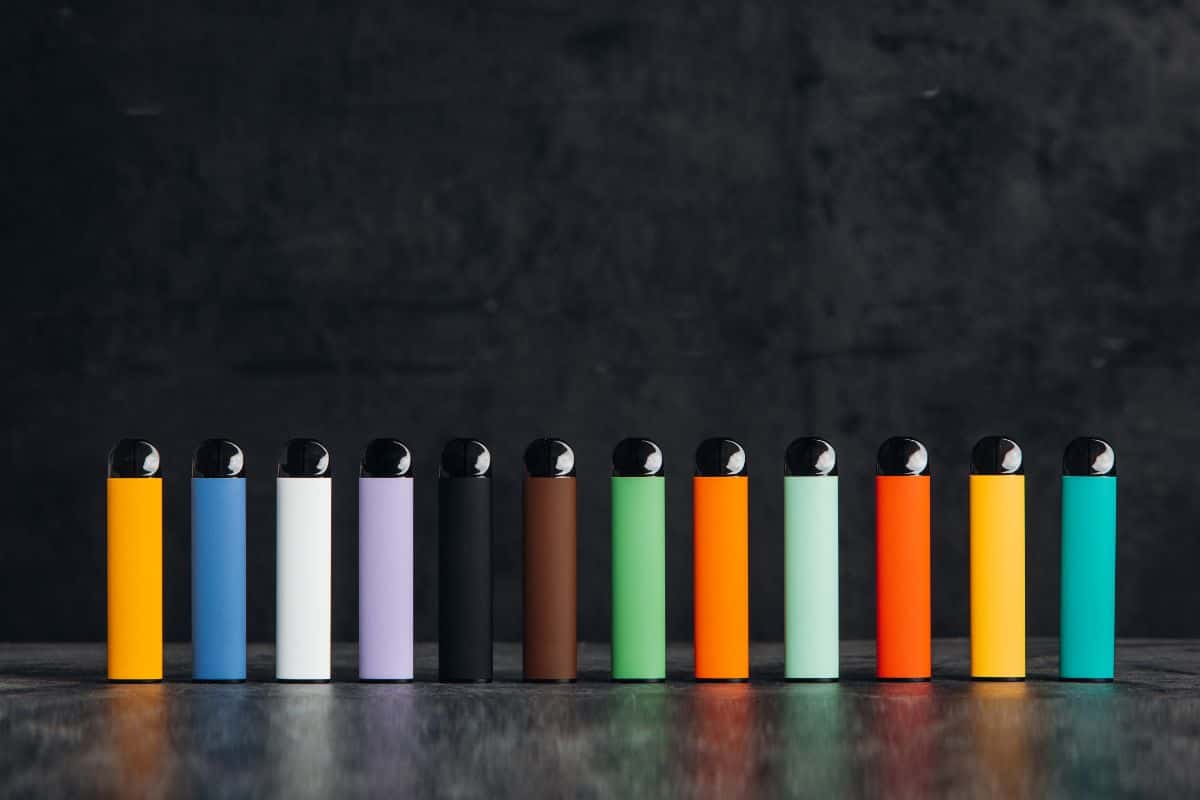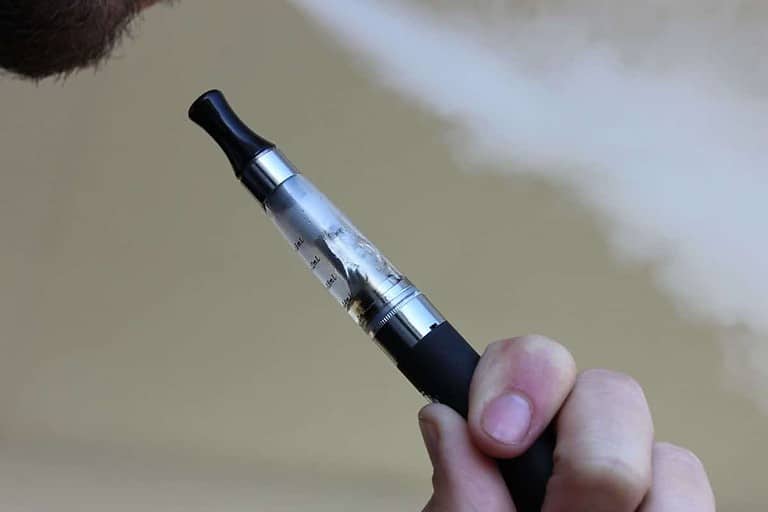How Long Do 510 Batteries Last: Essential Lifespan Facts
510 batteries are a popular choice for many vaping enthusiasts due to their performance and compatibility with a wide range of vaporizer attachments. These batteries offer a convenient solution for users who need a reliable power source for their vaporizers, and understanding their lifespan can help in making an informed decision when choosing a battery.
The lifespan of a 510 battery depends on several factors, including capacity, usage, and charging practices. Proper maintenance and care can help prolong the life of your battery, ensuring that you get the most out of your investment. By using your 510 battery responsibly and taking appropriate precautions, you can maximize its longevity and enjoy a satisfying vaping experience.
Table of Contents
Key Takeaways
- 510 batteries offer a versatile solution for powering vaporizers, with their lifespan depending on factors such as capacity, usage, and charging habits.
- Proper care and maintenance can help extend the life of your 510 battery, ensuring a satisfying and consistent vaping experience.
- A variety of 510 battery options are available to suit different materials and preferences, making them a popular choice among vaping enthusiasts.
NEW CUSTOMER DISCOUNT
Save 15%
15% OFF YOUR ENTIRE ORDER FOR NEW CUSTOMERS USE CODE WELCOME15!

510 Batteries Overview
510 batteries are a popular choice for powering vape pens used for both cannabis and nicotine consumption. These batteries are named after their 510 threading, which is a standard thread size found in many vape pens, making them compatible with a wide range of devices.
Designed for convenience and portability, 510 batteries are typically small and lightweight, making them an ideal option for users on-the-go. Most 510 batteries feature a range of voltage settings, allowing users to customize their vaping experience and accommodate different types of vape cartridges.

The lifespan of a 510 battery depends on several factors, including the battery’s capacity, usage, and maintenance. A high-quality 510 battery with proper care can last anywhere from 300 to 500 charge cycles. It is essential to charge the battery correctly and avoid overcharging, as this can decrease its overall lifespan.
It is also important to note that 510 batteries are not limited to vape pens. They can also be found in various electronic devices such as e-cigarettes and portable vaporizers, further contributing to their popularity among users.
In summary, 510 batteries are a versatile and widely used option for powering various vaping devices, such as vape pens for cannabis and nicotine consumption. Their lifespan depends on factors like capacity, usage, and proper maintenance, and they can typically last between 300 to 500 charge cycles.
Battery Capacity and Lifespan
When discussing 510 batteries, it’s important to understand their capacity and lifespan. Battery capacity is typically measured in milliampere-hours (mAh), which reflects the amount of charge the battery can store. The higher the capacity, the longer a battery can provide power before needing to be recharged.
The lifespan of 510 batteries can vary depending on factors like usage patterns, charging habits, and the quality of the battery itself. In general, high-quality 510 batteries with larger capacities can last longer than those with smaller capacities. It is essential to use a proper charger and avoid overcharging the battery to prolong its lifespan.
To give you an idea of the range of capacities for 510 batteries, here are some common examples:
| 650 mAh: This capacity is often found in smaller, more portable batteries. These batteries usually provide power for a few hours before needing to be recharged. |
| 900 mAh: This is a medium-capacity battery, generally offering longer usage times than the 650 mAh batteries. These batteries can typically last for several hours before needing a recharge. |
| 1100 mAh: This capacity is found in larger 510 batteries, which can provide power for a more extended period. These batteries might last all day or longer, depending on the device’s power consumption. |
It’s important to note that the actual battery life of a 510 battery with a specific capacity can vary from user to user due to differences in device power consumption, usage patterns, and battery quality. For example, a heavy user who frequently activates their device might deplete even a high-capacity battery more quickly than a light user with the same battery.
In conclusion, the capacity and lifespan of a 510 battery depend on the battery’s quality, user habits, and the device’s power consumption. To ensure the longest possible battery life, use a proper charger, avoid overcharging, and consider the battery’s capacity before purchasing.
Charging a 510 Battery
Charging a 510 battery is a simple process that requires little time and effort. To begin, locate the charging port on the battery, which is typically found at the bottom or side of the device. Most 510 batteries come with a USB charger, making it easy to connect to a USB port or wall adapter.
Once you have connected the charger to the battery, plug it into a power source. The LED indicator on the battery will light up to signal that the charging process has begun. It is essential to monitor the LED indicator during charging, as the color and blinking patterns indicate the battery’s charging status.

A common indicator pattern is a steady red light during the charging process, changing to a steady green light or turning off when the battery is fully charged. However, the specific LED indicator behavior may vary depending on the battery brand and model. Therefore, always refer to the user manual for specific instructions on understanding the LED signals.
It is crucial not to overcharge your 510 battery, as doing so may reduce its lifespan or, in extreme cases, cause damage. To prevent overcharging, always unplug the charger once the battery is fully charged, as indicated by the LED light. The charging time for a 510 battery may vary, but most batteries reach a full charge within 2 to 4 hours.
By following these simple steps and taking care to charge your 510 battery appropriately, you can ensure a long-lasting and reliable vaping experience. Regularly maintaining your battery and charger will further contribute to optimal performance and extend the life of your device.
Compatibility and Connection
The 510 batteries are widely used in the vaping industry due to their compatibility with numerous 510 cartridges. These batteries can typically connect with a variety of cartridges and atomizers, enhancing the overall vaping experience.
One of the main reasons behind the popularity of 510 thread batteries is their cross-compatibility. Users can seamlessly switch between different cartridges without having to invest in additional batteries. In addition, the threaded connection design ensures a secure and stable connection between the battery and the cartridge.
When selecting a compatible cartridge for your 510 threaded battery, it is crucial to consider certain factors, such as resistance and voltage requirements. Not all 510 cartridges may work optimally with every 510 thread battery, so it’s essential to ensure that the cartridge you choose meets your battery’s specifications.
Moreover, the versatility of 510 threaded batteries not only supports a broad range of cartridges but also accommodates various atomizers. This allows for a more customized vaping experience, enabling users to explore different setups and preferences.
In summary, the compatibility and connection provided by 510 batteries make them a popular choice among vaping enthusiasts. By paying attention to resistance and voltage requirements, users can enjoy a seamless and reliable vaping experience with various cartridges and atomizers, all supported by a single 510 thread battery.

Temperature Settings and Vapor Production
510 batteries are commonly used in vape devices due to their versatile performance. One important aspect of using a 510 battery in a vape device is finding the optimal temperature settings to maximize vapor production while conserving battery life. The right temperature setting largely depends on the resistance of the atomizer and the airflow provided in the vaping device.
A higher temperature setting usually increases vapor production, but also results in a shorter battery life. By contrast, a lower temperature setting provides a cooler and smoother vaping experience with less visible vapor output, while it extends the battery’s life. To find the right balance, it’s essential to consider different factors, such as the type of e-liquid or concentrate being used, the vaping device’s design, and the user’s preferences.
Battery temperature settings can also impact both the flavor and the density of the produced vapor. Higher temperatures typically intensify the taste of the e-liquid, producing a more robust flavor profile. However, higher temperatures also increase the potential for a burnt taste if the device’s airflow or resistance is not adjusted properly. Lower temperatures, on the other hand, often result in a more subtle flavor with a lighter vapor density.
When it comes to airflow, a more open setting allows cooler air to flow through the device, which can help offset the heat generated by higher temperature settings. Adjusting the airflow can also affect vapor production and flavor, as it directly influences the device’s performance. Optimal airflow settings depend on the resistance of the atomizer and the user’s desired vapor output.
In conclusion, choosing the right temperature settings and considering airflow and resistance are key to optimizing vapor production and maximizing the life of your 510 battery. By experimenting with different settings and paying attention to how the device performs, users can achieve a satisfying vaping experience while prolonging the battery life of their 510 vape devices.
Usage Experience
When it comes to using a 510 battery for your vape pen, the experience is often characterized as portable, discreet, and lightweight. These batteries are designed to be easy to handle and carry, making them perfect for individuals who want a convenient vaping option.
One key aspect of the usage experience is the ease of inhaling. Many 510 batteries feature an automatic activation system, which means there is no button to press – simply drawing from the mouthpiece activates the battery and produces vapor. This feature not only simplifies the vaping process but also adds an unintentional level of discretion, since there is no visible button to press.
In addition to being portable and lightweight, 510 batteries have a standardized diameter, typically around 9mm to 11mm. This allows them to be compatible with most vape pen attachments and cartridges on the market, giving users the freedom to choose and customize their vaping experience.
The mouthpiece is another important part of the 510 battery experience. With a variety of styles and materials available, from plastic to higher-quality glass or stainless steel, users can further tailor their vaping sessions to their preferences.
In conclusion, the usage experience of a 510 battery is marked by its portability, discreteness, and customization options. The automatic activation and variety in mouthpieces further enhance the overall experience, providing a satisfying and easily accessible vaping option. Though the exact lifespan of a 510 battery may vary, many users find they can rely on their vape pen for consistent performance over time.
Types of 510 Battery for Various Materials
510 batteries are popular in the vaping world due to their compatibility with a wide range of vaporizers, including vape pens and e-cigarettes. Known for their convenience, they come in a variety of power capacities, tailored for specific uses, such as vaping dry herbs, concentrates, and THC.
| Dry Herb vaping requires a more advanced heating system, making it imperative to choose a 510 battery designed for this purpose. These batteries have precision temperature control mechanisms that help maintain an optimal temperature level for the most efficient vaporization of dry herbs. |
| Concentrates such as wax and shatter require higher temperatures for vaporization than dry herbs, necessitating a battery with higher power output. A popular choice in this category is the variable voltage 510 battery. These batteries allow users to adjust the voltage for smoother hits or more intense vapor production. |
| Vape cartridges pre-filled with oil usually utilize a standard 510 battery with a consistent voltage output. However, if the cartridge contains specific requirements, a battery equipped with adjustable voltage settings may be necessary for optimal performance. Always keep in mind the compatibility of the vape cartridge with the battery. |
| Dab pen batteries are designed for vaporizing solid concentrates. These are typically more powerful than regular 510 batteries due to the required higher temperatures, and they often include features such as preheat functions, variable voltage, and safety mechanisms. |
In conclusion, with 510 cartridge compatibility being a crucial feature, users should look for specific qualities and functionalities in their 510 batteries. For example, vape pens designed for dry herbs will need precision temperature control, while those used for concentrates may require higher power outputs. By understanding the various material types and required functionalities, users can ensure a satisfying and consistent vaping experience.
Heating Element and Resistance
Heating elements in 510 batteries play a crucial role in their performance. These elements are responsible for converting electrical energy into thermal energy, which in turn heats the e-liquid in the device. There are different types of heating elements, with the most common one being the coil.
Resistance is a vital factor to consider when discussing 510 battery life. The resistance in the heating coil affects the amount of electrical current flowing through the device. Lower resistance allows for higher current flow, resulting in faster heating and a more intense vaping experience. Higher resistance equates to lower current flow and slower heating.

One critical aspect to note is that lower coil resistance leads to higher power consumption, which consequently shortens battery life. This is due to the increased energy demands in overcoming the resistance in the coil. So, choosing the right balance between coil resistance and desired vaping experience is essential for optimal battery life.
Heating and resistance issues can also impact the safety and performance of Li-ion batteries. Excessive Joule heat generation caused by transport resistance can lead to thermal problems, affecting the battery’s longevity and safety. Effective thermal management systems are necessary for mitigating such issues and ensuring stable and reliable battery performance.
Moreover, the battery’s internal resistance can change with time, affecting its performance and life. According to a study, internal resistance increases during battery heating tests, which ultimately impacts the overall battery life.
In summary, the balance between the heating element and resistance plays a pivotal role in determining battery life for 510 batteries. Understanding the different factors influencing their performance can help users make informed decisions about choosing the right balance between coil resistance and vaping experience, while maintaining optimal battery life. Factors such as thermal management and the battery’s internal resistance also contribute to its overall performance and should be a consideration for both manufacturers and users.
Popular Choices
Among the many options for vaping devices, the 510 batteries stand out as a popular choice, particularly for their compatibility with a wide range of vape cartridges. One of the major factors to consider when choosing a vaping device is the battery life. The longevity of 510 batteries varies depending on the model and usage, but let’s discuss some widely appreciated choices and their performance.
The PCKT Two has gained considerable popularity in recent times due to its sleek design and user-friendly features. This battery boasts a 660mAh capacity, giving users an extended vaping experience before needing to recharge. With three adjustable power modes, it allows users to tailor their vaping experience to their preferences, ensuring optimal performance. The PCKT Two battery is solid, reliable, and efficient, making it an ideal choice for vaping enthusiasts.
Another sought-after option in the world of 510 batteries is the CCELL M3 Battery. It is known for its slim and minimalist design, making it a discreet and convenient option. With a 350mAh capacity, it is capable of providing consistent power output for a satisfying vape experience and long-lasting battery life.
Here are a few more popular choices in the 510 batteries category:
- VASAYO Vape Pen: This option is appreciated for its unique design and features, offering a sleek look and a powerful 650mAh battery capacity. It is built with a magnetic adapter, simplifying the connection process with any 510-thread oil cartridge.
- YOLO NU-X: The YOLO NU-X is another popular choice among vapers, providing a compact design with a 280mAh battery capacity. It features variable voltage and a pre-heat function, ensuring a personalized and consistent vape experience.
- O2VAPE Flip Ultra: This battery is popular for its innovative and discreet design, featuring a folding mechanism to protect the cartridge. With a 650mAh capacity and adjustable voltage settings, it caters to users who prefer long-lasting performance and adaptability.
In conclusion, the battery life of 510 batteries depends on the specific model, usage habits, and personal preferences. When looking for a compatible and long-lasting battery, consider the options listed above, as they cater to a variety of vaping needs and are widely recognized for their reliability, durability, and performance.
Browse popular vape collections:
- Nicotine Disposables
- 2000 Puff Nicotine Disposable Vapes
- 2500 Puff Nicotine Disposable Vapes
- 5000 Puff Nicotine Disposable Vapes
- 6000 Puff Disposable Nicotine Vapes
- 7000 Puff Nicotine Disposable Vapes
- Disposable Vape Deals
- Best Vape Brands
- 8000 Puff Nicotine Disposable Vapes
- 9000 Puff Nicotine Disposable Vapes
- 5% Nicotine Disposable Vapes
- Rechargeable Nicotine Disposable Vapes
- Vape Coils
- Dab Wax Pens
- Dab Wax Pen Battery
- Yocan Vapes
- Vape Cases
Conclusion
Based on the available information, it is evident that the lifespan of 510 batteries can vary significantly depending on various factors such as usage, quality, and maintenance. Although the available resources do not provide a specific lifespan for 510 batteries, it is essential to understand that proper care and responsible usage can help prolong their life.
Choosing a reputable brand, storing the batteries in a cool and dry place, as well as not overcharging or discharging them can significantly improve their longevity. Additionally, it is crucial to monitor the battery’s performance and replace it when necessary, as continued use of a damaged or degraded battery can lead to safety issues and reduced device performance.
In conclusion, the lifespan of 510 batteries is largely dependent on how they are used, maintained, and stored. By following best practices, users can ensure that their batteries last longer and provide optimal performance over time.
Frequently Asked Questions
How long does it take to charge a 510 battery?
The charging time for a 510 battery typically ranges from 1 to 3 hours, depending on the capacity of the battery and the charger being used. It is important to charge the battery fully before using it and to avoid overcharging, which may shorten its lifespan.
What is the typical lifespan of a vape battery?
The lifespan of a vape battery depends on multiple factors, such as the quality of the battery, how frequently it is used, and how it is maintained. Generally, a well-maintained vape battery can last between 300 and 500 charge cycles before losing significant capacity.
How long do cartridge batteries generally last?
Cartridge batteries, when used moderately, can last from one to two weeks on a single charge. However, this can vary depending on the power of the battery, the cartridge being used, and how frequently the device is used. To extend the life of your cartridge battery, it is recommended to clean the connections regularly and use compatible cartridges.
What is the charging time for rechargeable vapes?
The charging time for rechargeable vapes varies depending on the battery capacity and charger being used. Generally, it takes about 2 to 3 hours to fully charge a rechargeable vape battery. It is important to charge the vape battery fully before each use, and not to leave it plugged in longer than necessary to avoid overcharging and decreasing the battery life.
Which 510 vape battery has the best longevity?
Several factors contribute to the longevity of a 510 vape battery, such as its brand, capacity, and use. Renowned brands like Eleaf iStick and Vision Spinner are known for providing long-lasting and reliable batteries with various capacities. However, the longevity of any battery will depend on how well it is maintained and used. Always follow the manufacturer’s guidelines for charging, storing, and maintaining your vape battery.
How long do disposable vape batteries last?
Disposable vape batteries are designed to last for a limited time, typically until they run out of e-liquid or the battery runs out of charge. Most disposable vape batteries can last for around 200 to 400 puffs, depending on the device’s battery capacity and e-liquid capacity. It is important to remember that disposable vapes are not meant to be recharged or reused, and should be discarded responsibly once they are no longer functioning.
Resources:
- https://www.grandviewresearch.com/industry-analysis/vape-cartridge-market
- https://en.wikipedia.org/wiki/Electronic_cigarette
- https://en.wikipedia.org/wiki/Cannabis_(drug)
- https://en.wikipedia.org/wiki/Tetrahydrocannabinol
- https://en.wikipedia.org/wiki/Nicotine_salt?_ga=2.56470763.1724371659.1681286262-1699932226.1672148734







